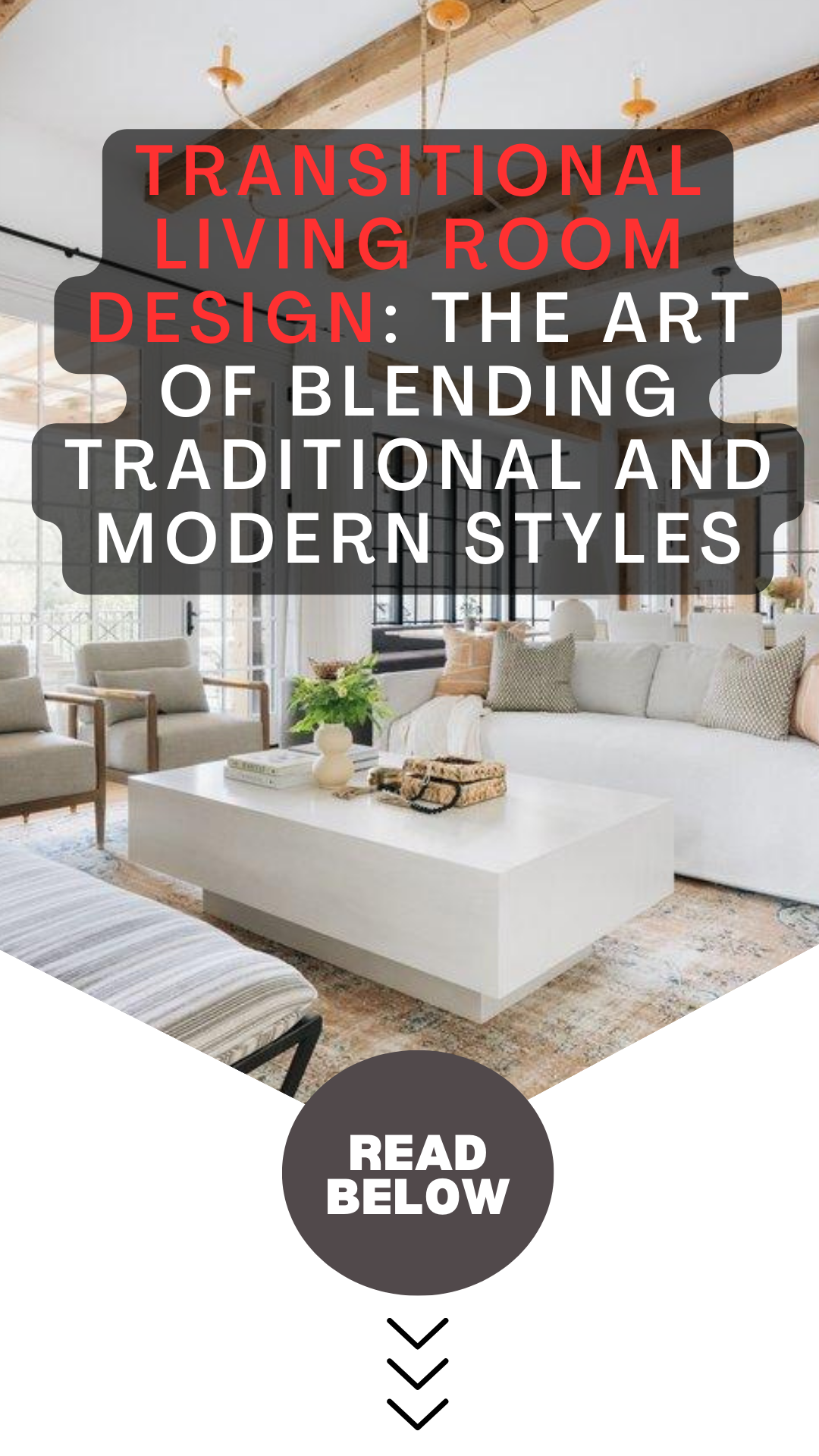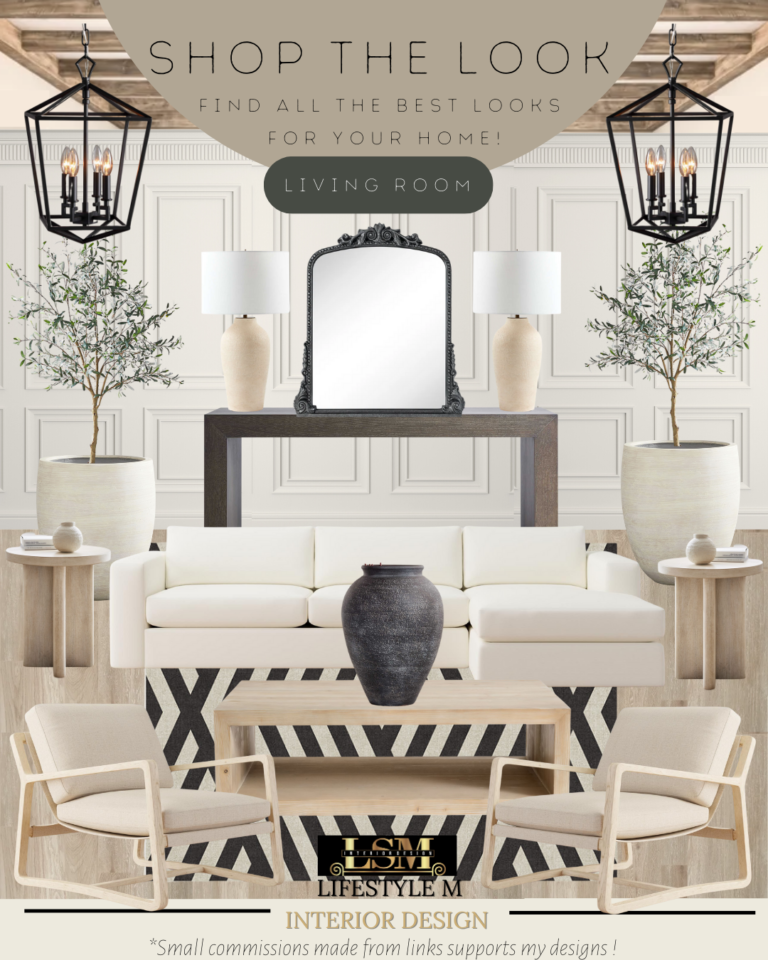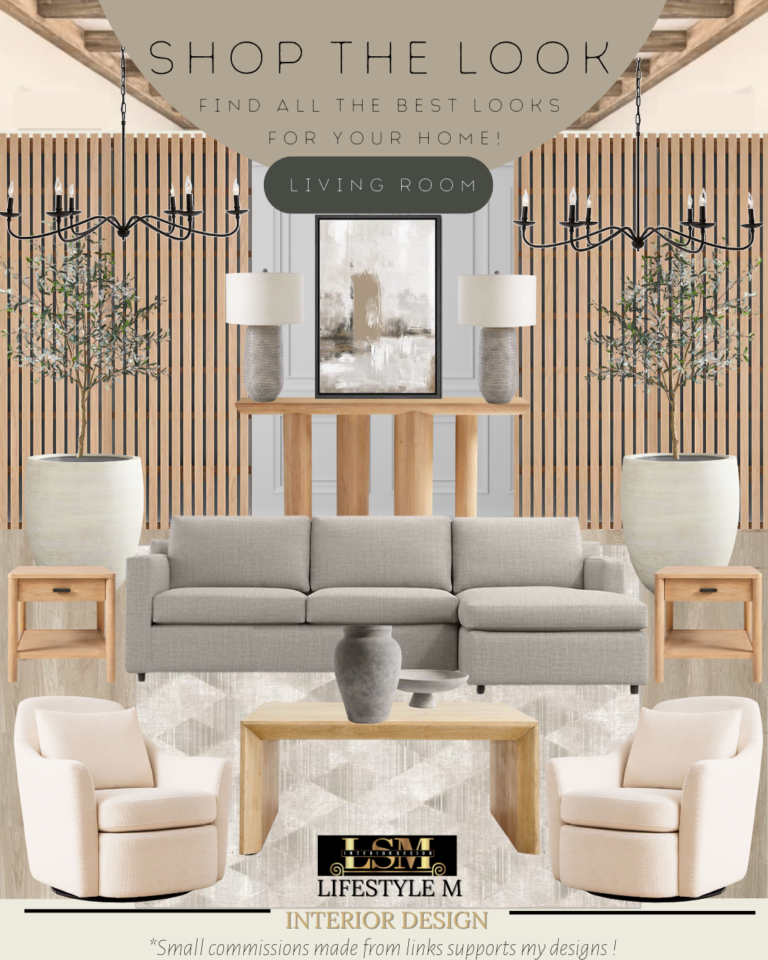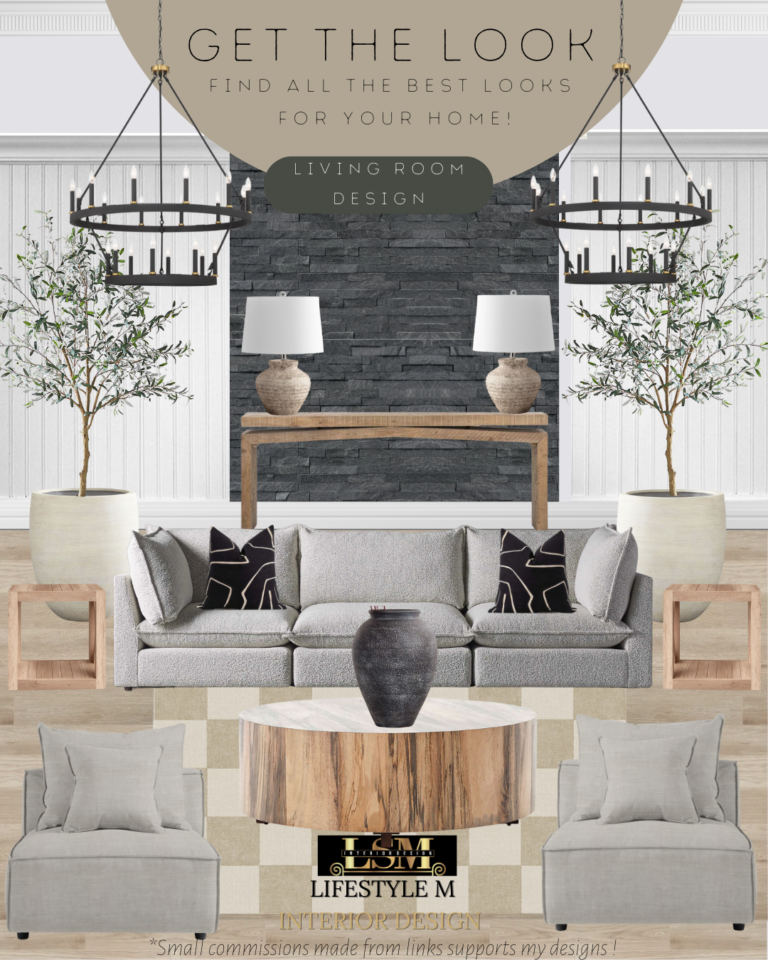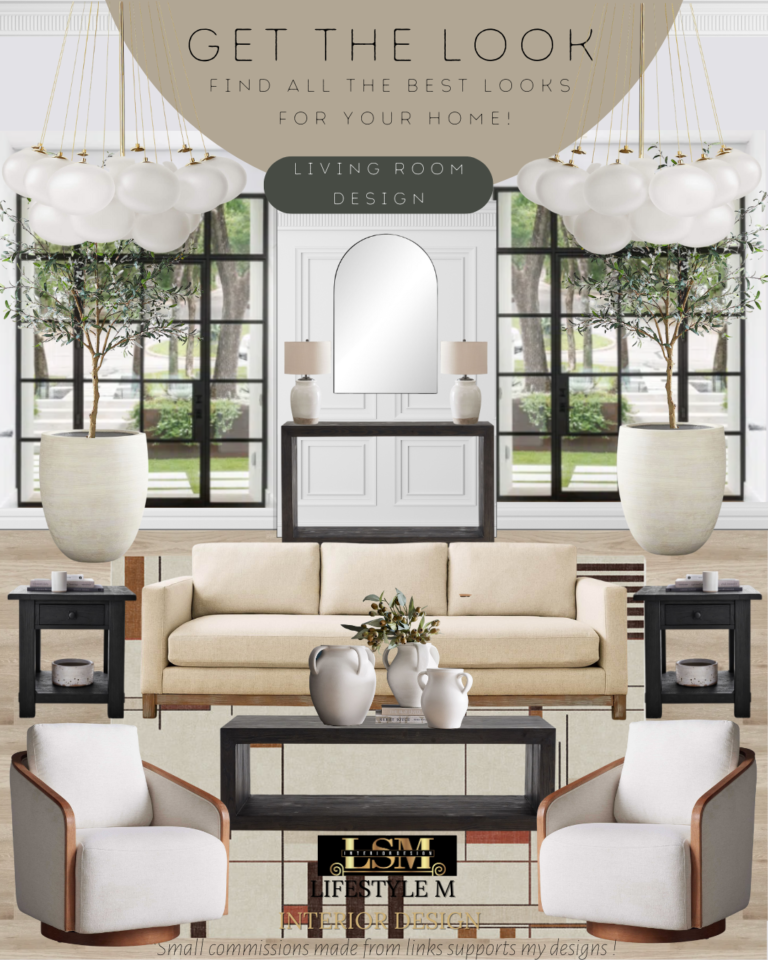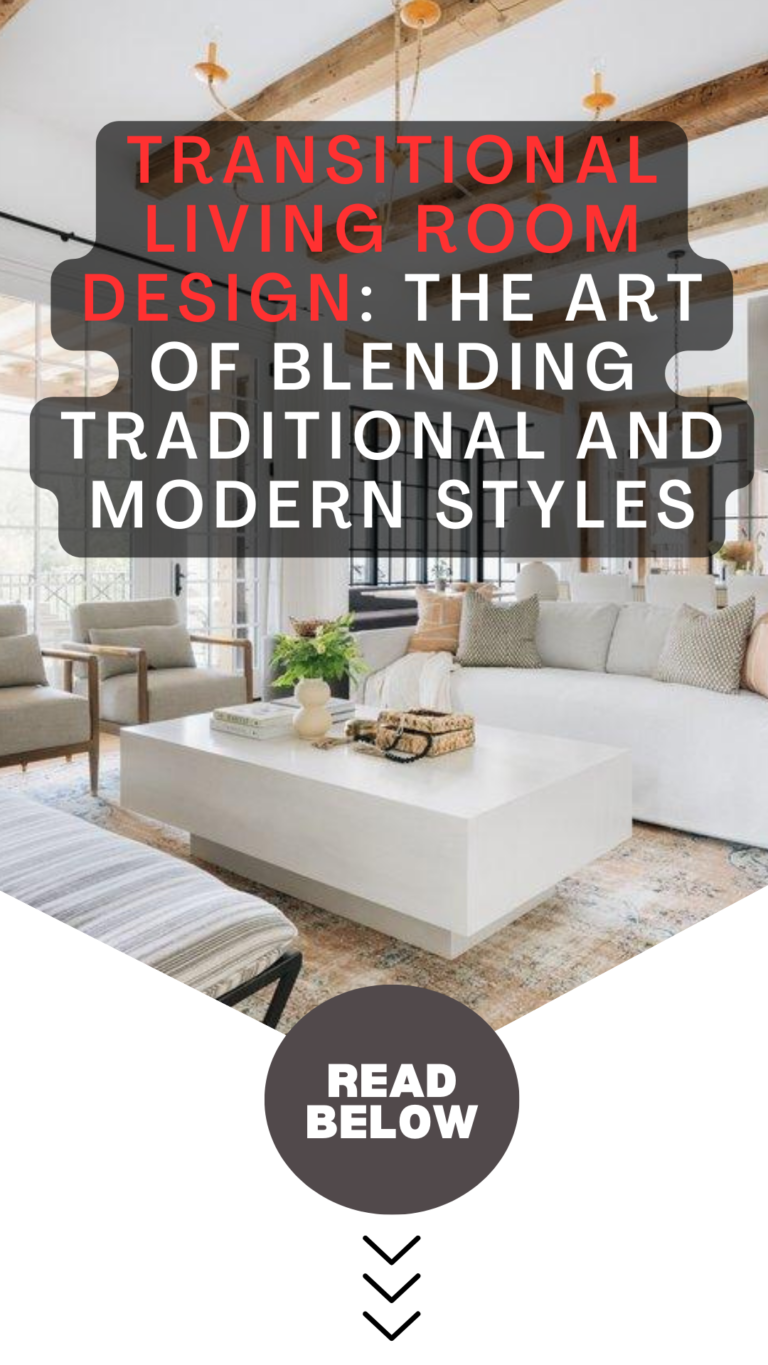
Lifestyle M Interior Design
Transitional Living Room Design: The Art of Blending Traditional and Modern Styles
Are you torn between your love for traditional and modern design styles? Do you want to create a space that is both comfortable and stylish? If yes, then transitional design is the perfect solution for your living room. Transitional design is a harmonious blend of traditional and modern styles that creates a timeless and sophisticated look. In this article, we will explore the key elements of transitional design and how you can create a beautiful and functional transitional living room.
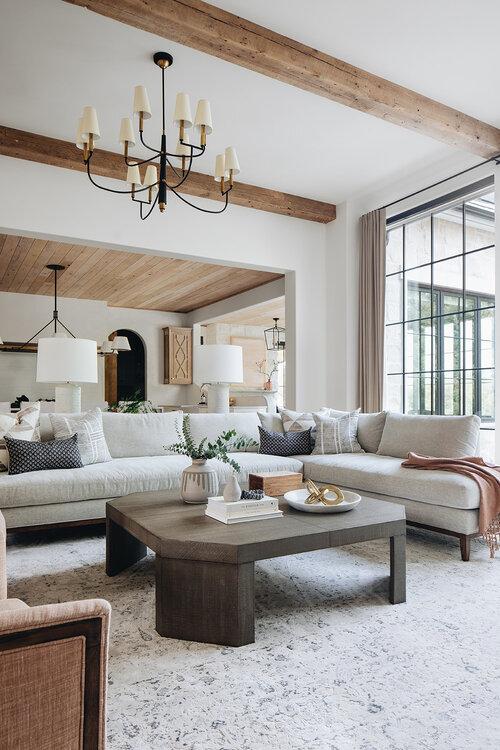
What is transitional design and why is it popular?
Transitional design is a style that combines traditional and modern elements to create a balanced and cohesive look. It is a popular design style because it offers the best of both worlds. Traditional design can be too formal and stuffy, while modern design can be too cold and sterile. Transitional design strikes the perfect balance between the two, creating a comfortable and inviting space that is both timeless and stylish.
Transitional design is also popular because it is versatile and adaptable. It can work in a variety of spaces, from small apartments to large homes. It is also a great choice for those who want to update their space without committing to a specific style. With transitional design, you can mix and match different elements to create a unique and personalized space.
Unleashing the Benefits of Transitional Design!
Transform Your Living Room into a Timeless Haven with Transitional Design
When it comes to designing your living room, you want to create a space that exudes comfort and style. That’s where transitional design comes in – it offers the perfect blend of traditional and modern elements to create a warm and inviting atmosphere that will never go out of fashion.
With plush sofas, sleek coffee tables, and statement lighting, transitional design seamlessly merges classic and contemporary elements to give you a space that is both comfortable and chic. But that’s not all – it’s also timeless, meaning you can invest in high-quality furniture and decor that will remain relevant for years to come.
And if you’re someone who loves to change things up from time to time, you’ll appreciate the flexibility and adaptability that transitional design offers. By simply updating your accessories or adding a few new pieces of furniture, you can effortlessly transform your space to fit your evolving style and needs.
How to Blend Traditional and Modern Styles for Your Perfect Living Room Design
“Unleashing the Power of Transitional Design: How to Effortlessly Blend Traditional and Modern Styles in Your Living Room”
Who says you can’t have the best of both worlds? Transitional design offers the perfect solution for those who love traditional and modern styles. By striking the right balance, you can create a stunning living room that speaks to your unique taste and personality.
Don’t let the challenge of blending traditional and modern styles hold you back. With transitional design, it’s easy to pair a traditional sofa with a modern coffee table or mix and match textures and patterns to create a one-of-a-kind space.
Color also plays a crucial role in blending traditional and modern styles. Embrace the beauty of neutral color palettes, while adding a pop of color to create a more modern look. Whether it’s with vibrant throw pillows or a bold rug, a touch of color can take your living room from ordinary to extraordinary.
How to create an open floor plan in your living room
An open floor plan is a popular design trend that can make your living room feel larger and more spacious. To create an open floor plan in your living room, you should:
Remove unnecessary walls
Removing unnecessary walls can be the perfect solution to create an open and airy space that you’ll love. Imagine being able to cook dinner in your kitchen while still chatting with your family or guests in the living room. By removing a wall between these areas, you can create a seamless flow between rooms, making your home feel more spacious and inviting.
Not only does removing walls create a more open floor plan, but it also allows for more natural light to flow throughout the space, making it feel brighter and more welcoming. Plus, it gives you the opportunity to showcase your decor and style in a more cohesive way, as you can now see the entire space at once.
Say goodbye to feeling cramped and closed in, and say hello to a new, refreshed living space with an open and airy feel.
Use furniture to define spaces
Transforming a dull and uninviting living space into a functional and stylish haven can be a challenge. But fear not, as there’s a clever trick to create distinct zones in your living room without adding any walls or barriers! By using furniture to define different spaces, you can create a cozy and functional living room that feels both spacious and inviting.
One nifty example is to use a sofa as a divider to separate the living room and dining room. This creates a visual boundary that defines each area, while still maintaining an open floor plan that allows natural light to flow through the space. You can also use other furniture pieces such as bookcases, screens, or area rugs to create different zones and add personality to your living room. With a little bit of creativity and some clever furniture placement, you can transform your living space into a multi-functional oasis that perfectly fits your lifestyle.
Create a focal point
Designing a living room that feels cohesive and inviting can be a challenge, but creating a focal point can help tie everything together. A focal point is the visual anchor of the room, drawing the eye and creating a sense of harmony and flow.
Think of a focal point as the star of the show. It should be the first thing people notice when they enter the room and should set the tone for the rest of the space. A statement piece of art or a bold rug are great options for creating a focal point in your living room. You can also use a striking piece of furniture, such as a unique coffee table or a stylish armchair, to draw attention and set the mood.
The key is to choose something that speaks to your personal style and makes a statement. Once you’ve chosen your focal point, you can build the rest of your design around it. Use colors and patterns that complement the focal point, and arrange your furniture in a way that directs attention towards it. With a well-designed focal point, your living room will feel cohesive, inviting, and visually stunning.
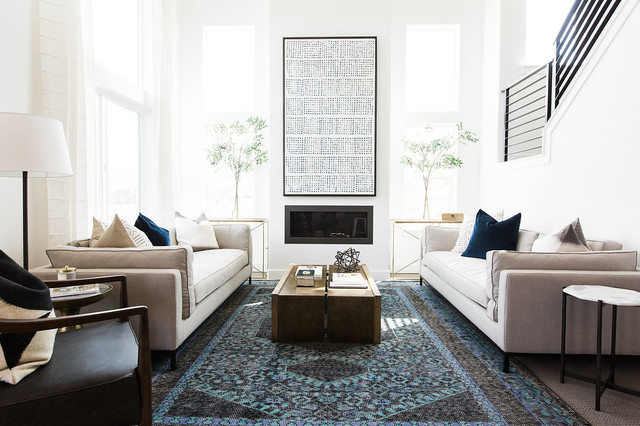
Flexibility and adaptability in transitional living room design
With its emphasis on flexibility and adaptability, transitional design allows you to easily update your space without breaking the bank. Whether you want to add a pop of color with some vibrant throw pillows or mix in more traditional or modern elements, transitional design has got you covered. Plus, its timeless style means you can enjoy your space for years to come, no matter how your tastes evolve. Don’t settle for a stagnant living room – embrace the versatility of transitional design!
Best furniture and decor for transitional living rooms
In order to create the perfect transitional living room, it’s important to choose the right furniture and decor elements. Here are some key pieces that you should consider:
Plush sofas and chairs: Comfortable seating is essential for any living room, and plush sofas and chairs are the perfect way to achieve both comfort and style. Neutral colors such as beige, gray, and cream are popular choices for transitional living rooms, as they allow you to add pops of color through accessories and artwork.
Sleek coffee tables: A sleek coffee table is a great addition to a transitional living room. Modern materials such as glass or metal can add a touch of sophistication and elegance to the space, while still maintaining a clean and simple look.
Statement lighting: Statement lighting can add a touch of drama and glamour to your living room. A bold chandelier or pendant light can serve as a focal point and create a sense of grandeur, while still fitting in with the transitional design aesthetic.
Art and accessories: Art and accessories are the finishing touches that can really bring your transitional living room to life. Colorful throw pillows, rugs, and curtains can add personality and style to the space, while still maintaining a sense of balance and harmony. Don’t be afraid to mix and match different textures and patterns to create a unique and personalized look.
Hiring an interior designer for transitional living room design
If you are not sure how to create a transitional living room, or if you want to ensure that your space is both functional and stylish, you may want to consider hiring an interior designer. An interior designer can help you create a cohesive and personalized space that reflects your style and needs.
Conclusion
Transitional design is a beautiful and functional style that combines traditional and modern elements. By using neutral color palettes, mixed textures, comfortable seating, statement lighting, art, and accessories, you can create a timeless and sophisticated living room. Whether you prefer a coastal, rustic, or glam style, there are many ideas and inspiration to choose from. So why not create a beautiful and functional transitional living room today?

